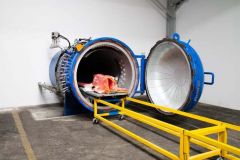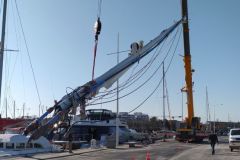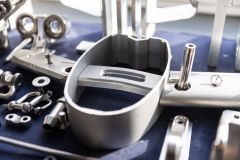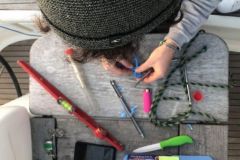The rigger's job
Rigger, rigger, rigging, rigging... Without knowing too much about etymology, we quickly understand that the rigger is the person who works on the rigging. And without touching it too much, we know that the rigging revolves around everything that brings it back to the mast.
According to the FIN," the rigger carefully prepares and installs the mast, certain equipment and ropes of the boat. He adjusts and checks the entire rigging."
"I usually say that the rigger takes care of everything above the deck of a sailboat that moves forward under sail. It's very generalist, but it's a good summary. We take care of the masts, the installations that keep it in place, the pulleys and deck plan, the winches and possibly the mooring lines" explains Stéphane.
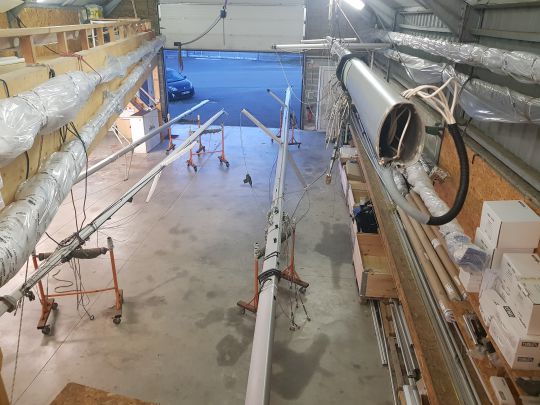
How do you become gréeur??
"I discovered this profession when I graduated from INB, the professional training centre for the nautical professions. Fifteen years ago, there was no rigging training and I had to learn by practicing. Few of us do this job. In my area, there are about 15 of us." And what are the qualities to be gréeur?? " No special skills are required. You have to be logical, coherent, know how to do things and, above all, navigate. It's really important, because it lets you know how it works."
Today, FIN recommends several training courses to become a rigger:
- CAP Metalworker Locksmith
- CFP Rigger
- CQP Maintenance Agent Services in the Nautical Industries
- CFP d'Accastillage
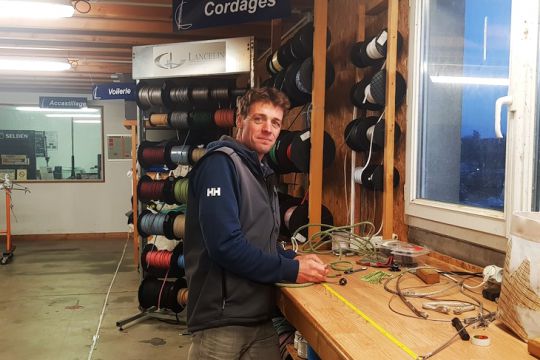
Working on the rigging
The rigger prepares, installs and repairs rigging. It is a craftsman's job, manual and technical. He prepares new masts for construction sites, but also for private individuals. "I receive the masts directly from the manufacturer and I will install all the equipment and peripherals: halyards, power cables, spreaders, reels... For individuals, this is optimization. A change of material, for example."
Another of its missions is to make periodic changes to the standing rigging and commonplace . In this article, we will see how to roll up long ends. In this example the technique is described for a right-handed person.

Listening and advising
One of the main roles of the rigger profession is" listening and advising." Boaters need to be accompanied for the maintenance of the rigging by a specialist who will be able to share his expertise and experience.
"On the rigging part, boaters come to us to solve a problem they are aware of, but can't diagnose. In most cases, they come because something doesn't work."
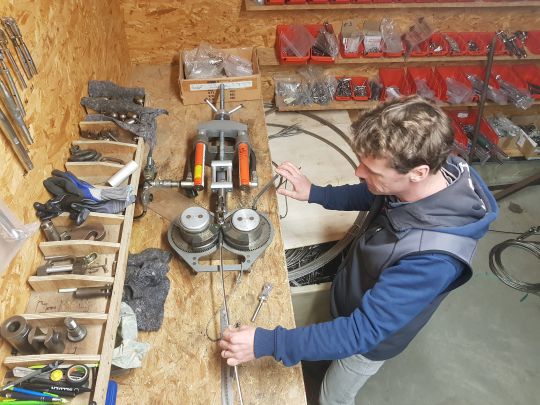
Define the technical solution
"We will first define with the customer the best technical solution before selling it. It is thanks to our experience - it is important to sail to advise - that we analyse how boaters use their equipment and whether it is consistent or not."
Due to the technical complexity of a rig, it is sometimes difficult for boaters to explain what is not working on their sailboat. Thanks to the model of the rig available at the workshop, Stéphane will be able to identify the problem encountered with them and solve it technically.
"Technical speeches can be difficult to understand. It's important to simplify the message to be conveyed."













